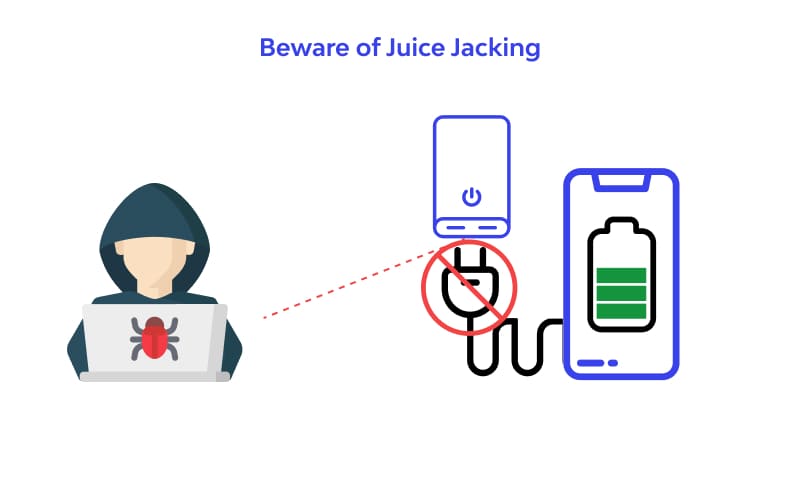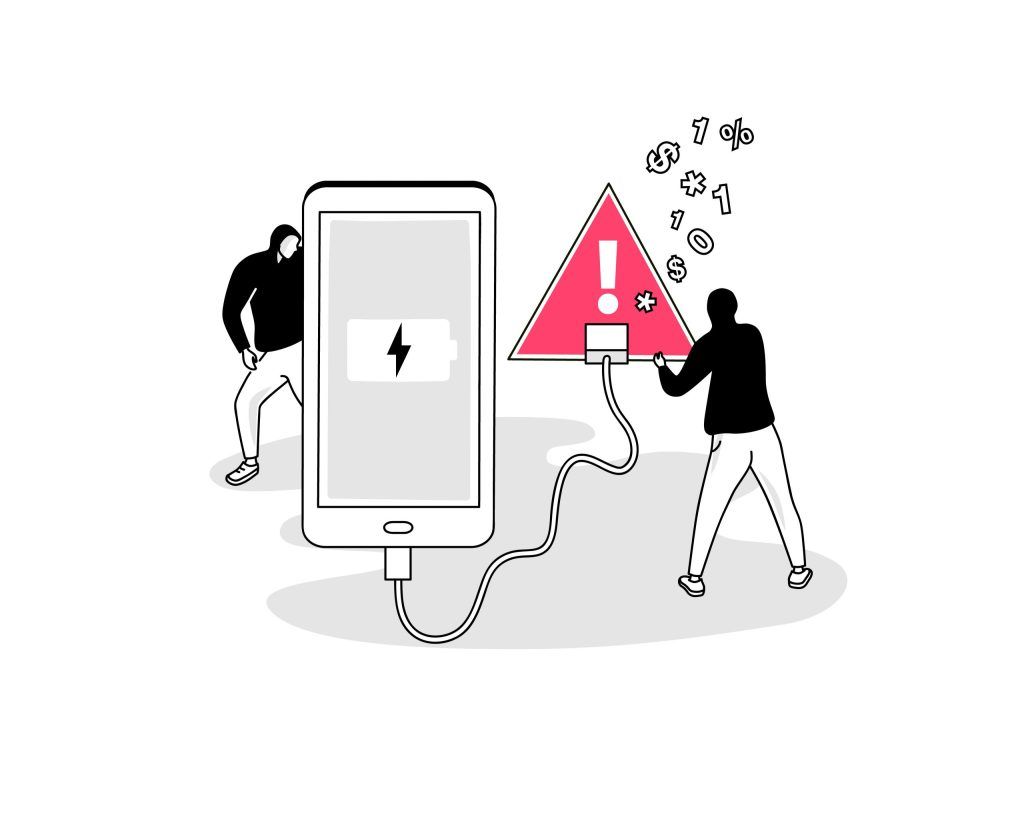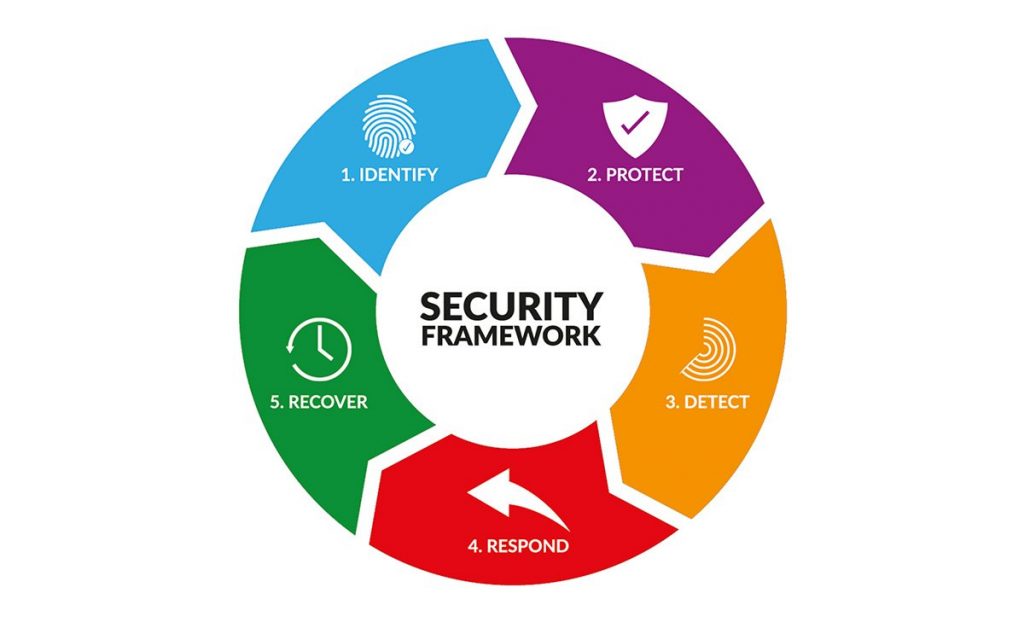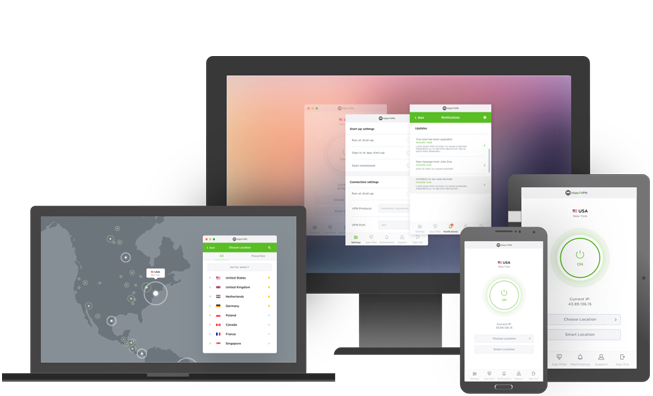 Have you ever plugged your phone into a public charging station at an airport or mall and felt relieved that your battery was getting some much-needed juice? Well, think again! You might have just fallen victim to a “juice jacking” attack.
Have you ever plugged your phone into a public charging station at an airport or mall and felt relieved that your battery was getting some much-needed juice? Well, think again! You might have just fallen victim to a “juice jacking” attack.
In this modern age where smartphones are our lifelines, cybercriminals are finding new ways to exploit them for personal gain. Juice jacking attacks have become increasingly common in recent years and can leave unsuspecting victims with stolen data, malware infections, and even financial loss.
But don’t worry, in this blog post we will explain what juice jacking attacks are, how they work, the different types of attacks that exist and most importantly – how to prevent them from happening to you!
What are juice jacking attacks?
Juice jacking attacks are a form of cyber attack that targets users who charge their devices in public places using USB charging ports. These attacks exploit the fact that when you plug your phone into a USB charging port, your device establishes a data connection with the power source to exchange information about how much power it requires.
However, this connection can be exploited by hackers who have tampered with the charging station or placed malicious software on it. Once connected to your device, they can access sensitive information like passwords, bank details and personal photos without you even noticing.
Juice jacking attacks represent a serious threat to smartphone users who frequently charge their phones in public areas such as airports, cafes or train stations. This is because these locations often have little or no security measures in place to prevent attackers from installing malware on charging stations.
To avoid falling victim to juice jacking attacks, it’s essential to understand how they work and take steps to protect yourself from them.
How do juice jacking attacks work?
 Juice jacking attacks work by exploiting the USB charging port of your mobile device. A cybercriminal sets up a public charging station, which is rigged with malware that infects your device once you plug it in to charge.
Juice jacking attacks work by exploiting the USB charging port of your mobile device. A cybercriminal sets up a public charging station, which is rigged with malware that infects your device once you plug it in to charge.
When you connect your phone or tablet to a USB port, it starts communicating with the host computer. This communication establishes not only how much power your device needs but also what data can be transferred between them. And this is where juice jacking attacks come in.
The attacker modifies the firmware on the public charging station so that when you connect your device, it automatically runs malicious software designed to steal sensitive information from your phone or install malware onto it.
Once infected, hackers can access all of your personal data and even remotely control certain functions of the phone like sending messages or making calls without permission.
Juice jacking has become widespread due to its effectiveness and ease of execution. Therefore, taking precautions against these types of attacks should be at the top of everyone’s priority list when out in public places!
Types of juice jacking
There are two main types of juice jacking attacks that attackers use to steal data and infect devices.
1. The first type is known as “data theft,” where an attacker gains access to your device and steals your personal information such as contacts, passwords, and credit card details. They do this by installing malware or spyware on your device when you connect it to a compromised charging station. That how your online security may get compromised.
2. The second type of juice jacking attack is called “ransomware.” In this scenario, the attacker installs ransomware onto your device when you connect it to a malicious charging station. Once installed, the ransomware encrypts all the files on your device and demands payment in exchange for their decryption.
Both types of attacks can cause significant damage if not prevented. It’s important to be aware of these risks and take necessary steps to protect yourself from them. Always make sure you’re using trusted power sources or carry a portable charger with you at all times.
How to detect juice jacking atacks?
 Juice jacking attacks can be difficult to detect since they often do not leave any physical evidence. However, there are a few warning signs that could indicate your device has been compromised.
Juice jacking attacks can be difficult to detect since they often do not leave any physical evidence. However, there are a few warning signs that could indicate your device has been compromised.
Firstly, if you notice that your phone is charging more slowly than usual or the battery percentage is decreasing even when plugged in, this may be a sign of juice jacking. It’s also important to check for unusual pop-ups or notifications on your device while it’s charging.
Another way to detect juice jacking attacks is by paying attention to where you plug in your device. If you’re using public charging stations, such as those found at airports or coffee shops, be wary of USB ports that seem loose or have visible damage. These could potentially contain malware designed to steal your personal information.
Consider investing in a data blocker which will protect against unwanted data transfer between devices and prevent hackers from accessing sensitive information.
By staying vigilant and taking preventive measures like using a data blocker and avoiding public charging stations whenever possible, you can decrease the likelihood of falling victim to a juice jacking attack.
How to prevent juice jacking attacks
Preventing juice jacking attacks is essential to keep your personal and sensitive data safe. Here are some steps you can take to avoid becoming a victim of this type of cyber attack:
Firstly, avoid using public charging stations as much as possible. Instead, carry your own charger or portable battery pack with you at all times.
Secondly, invest in a USB data blocker or charge-only cable. These devices block any data transfer between the charging port and your device while still allowing for power flow.
Thirdly, never trust unknown charging ports or cables that you find in public places like airports, train stations or cafes. Stick to trusted sources only.
Fourthly, consider using a Virtual Private Network (VPN) when connecting to public Wi-Fi networks. This will encrypt all internet traffic flowing through your device and prevent hackers from accessing it.
Enable auto-lock on your device’s screen so that it locks itself after a period of inactivity. This will add an extra layer of protection if someone tries to access your phone while it’s left unattended.
By following these simple yet effective prevention measures, you can safeguard yourself against juice jacking attacks and keep sensitive information secure.
Use VPN to prevent juice jacking attacks
Using a VPN is one of the most effective ways to prevent juice jacking attacks. A VPN, or virtual private network, encrypts your internet traffic and routes it through a remote server. This makes it much harder for hackers to intercept your data.
When you connect to public charging stations without using a VPN, you are essentially giving away access to all of the data on your device. Hackers can potentially steal passwords, credit card numbers, and other sensitive information.
By using a VPN, however, you create an encrypted tunnel between your device and the internet. This means that even if someone does manage to intercept your data while you’re charging up at a public station, they won’t be able to read it.
It’s important to note that not all VPNs are created equal when it comes to protecting against juice jacking attacks. Make sure you choose a reputable provider with strong encryption standards.
Using a VPN is an easy and effective way to protect yourself from juice jacking attacks while still being able to charge up on-the-go.
Best VPN to prevent juice jacking attacks
HideIPVPN offers a VPN service with military-grade encryption, and high-speed servers with unlimited bandwidth.
Our service comes with shared IP addresses so that your activity can never be tied to one particular user, further protecting your privacy.

We also offer DNS leak protection, a Kill Switch, the latest VPN protocols, and a guaranteed no-log policy.
Best VPN Deal! Get HideIPVPN for $2.7/mo!
Every purchase you make comes with a 30-day money-back guarantee.
Conclusion
In today’s digital world, keeping our devices safe from cyber threats is more important than ever. Juice jacking attacks are a real and growing threat that can compromise sensitive information on your device or even damage it permanently.
By following the preventive measures discussed in this article such as avoiding public charging ports, using portable chargers, and employing VPNs while charging your device, you can minimize the risk of juice jacking attacks considerably.
Remember to always stay vigilant and cautious when it comes to charging your device in public areas. With these simple steps, you can ensure that your personal data stays secure and protected from malicious cyber-attacks.



